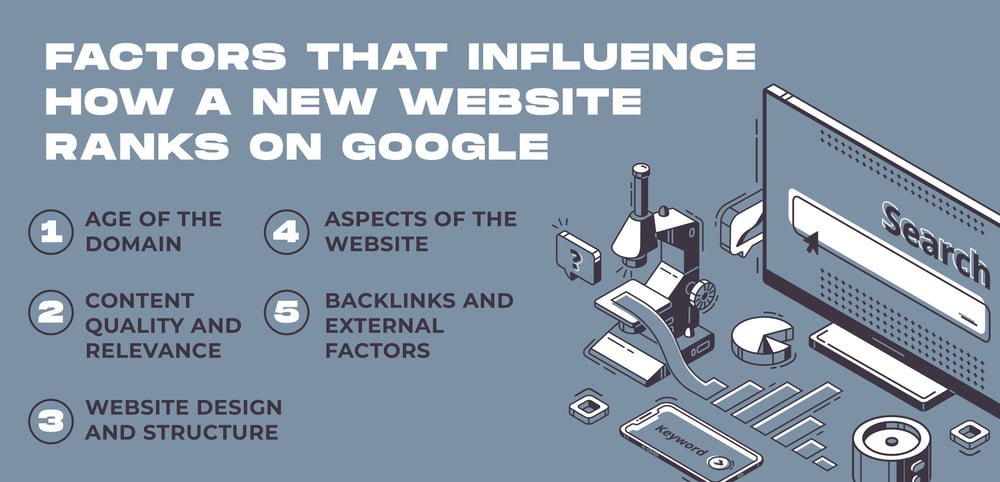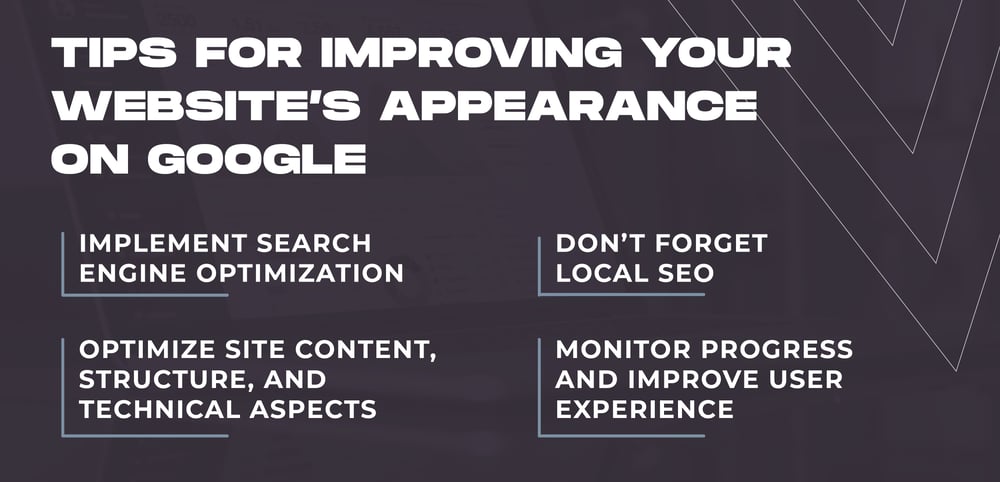Your new website has gone live. Now, you’re waiting for Google to index your site and rank it highly among the competition. But what’s taking so long?
As the world’s most popular search engine, Google boasts an amazing 4.9 billion users worldwide who perform upwards of 8.5 billion queries each day. If you want a healthy portion of those views pointed your way, you’ve come to the right place.
Keep reading to learn how to make your website show up on Google and rank highly in the search engine results pages (SERPs). Ready? Let’s get started!
How Google Finds and Indexes New Websites
Whether your site is new or merely updated from a previous version, ranking highly in Google is part and parcel of having a strong web presence. It helps your target audience find your website and can give you the engagement you expect for business success.
Luckily, Google is constantly on the lookout for new sites to index and rank. The search engine employs an automatic program known as Googlebot. This auto-seeker scours the internet and returns any web pages that have yet to be listed in the SERPs.
Once Google finds a new site, the URL and the addresses of each page are added to Google’s indexing system. The bot then proceeds to “crawl” each page, which essentially means reading the content and assessing the backend code. Google’s goal is to determine what each page is about.
By analyzing the quality of the content — and the context — Google is able to determine where each page should rank in the search results.
Factors That Influence How a New Website Ranks on Google
In a perfect world, your new or updated website would appear on Google instantly after being published. As you probably know from technology, not everything works as it should. Google is no different. It can take days and sometimes weeks for a new site to appear on Google.
You can expedite the process by uploading a sitemap to Google Search Console. Doing so is like telling Google, “Crawl my site now, please.”
Once Google indexes your website, it’s up in the air where your site will rank. You could be on page one or page twenty. Page one is always ideal, as few people will traverse beyond the first page of the search results. The following factors can influence how highly your site ranks.

Age of the Domain
Google sees older domains as more established and trustworthy. That is not to say that your new site cannot rank highly. Make sure all other factors on this list are optimized to boost the visibility of your new domain until the necessary time passes.
Content Quality and Relevance
Google rewards websites that offer well-written, valuable, and unique content. Your readers should be able to take something away from your content, be it a tip or even a laugh.
The closer your content aligns with your target audience’s search queries and user intent, the better you’ll rank. This is where research comes in to ensure your content is helping your audience achieve its goals.
Website Design and Structure
The highest-ranking websites are visually appealing and easy to use. The content should be formatted for skimmers and simple to read. Break up content by using short sentences and paragraphs. Use headers and subheaders to structure your content logically from beginning to end.
Technical Aspects of the Website
In case you haven’t noticed, Google elevates websites in its search rankings that offer the best user experience. From the quality of content to visual appeal, Google likes sites that are appreciated most by site visitors.
In keeping with that theme, technical aspects to pay attention to include speed, mobile-friendliness, and security.
Backlinks and External Factors
In addition to focusing on user experience, Google pays attention to social proof. High-quality sites that link back to yours can give your website a boost. Those links are known as backlinks.
To be valuable, backlinks should be earned organically and never bought. Gathering quality backlinks takes time, as it requires you to nurture relationships with prominent organizations and website owners.
Timeline for New Websites to Appear on Google
Do everything correctly, and you have a good chance of featuring prominently on Google. Unfortunately, there is no predictable timeline for how long it takes for Google to index and rank your site. It can vary from days to weeks. Here is how the process happens:
- Your website is launched: Once your site goes live, you can wait for Google to index your site, or you can upload your sitemap to Google Search Console to speed things up. While you are waiting for Google to follow through, spend time and effort ensuring your website is technically sound, has quality content, and is ready to be indexed.
- Your site gets indexed: Googlebot has discovered your site. This is when crawling begins. Each page of your site is indexed, analyzed, and ranked according to structure, quality, and relevance.
- Your site is ranked: The purpose of analyzing your content is to determine what your site is about and how you can help users. If your site is populated with quality content, structurally sound, and technically streamlined, you may rise through the ranks. It can take time to increase your site rankings, but the effort is worth it. The higher you rank, the greater the chances people will see and visit your site en masse.
To illustrate how indexing and ranking occur, let’s take a look at two examples.
Example A
A newly launched website is optimized with top-notch content and valuable strategies users can implement to further their goals. The content is structured logically, and the site employs a solid backlink strategy.
The site begins appearing on Google within two weeks of going live. Because the webmaster focuses on consistent search engine optimization (SEO) efforts, the website steadily climbs in the rankings. Three months later, the site achieves significant visibility.
Example B
Another website goes live with average content quality and zero backlinks. Two months after submission, the site finally appears on Google.
The site owner is not content with these results, so he invests time in ongoing SEO efforts, which include improvements to the content and link building. The site begins ranking higher in the SERPs within six months and eventually reaches the first page for several targeted keywords.
Tips for Improving Your Website’s Appearance on Google
If you want to know how to get your website to show up on Google like the two examples above, use the following tips. 
Implement Search Engine Optimization
On-page SEO involves keyword research, optimizing meta tags, and, of course, creating high-quality content. Off-page SEO can involve the same tactics, but also includes forming a backlinking strategy with authoritative site partners.
Optimize Site Content, Structure, and Technical Aspects
Focus on creating valuable and relevant content. Structure your website with logical headings and subheadings. Use internal and external linking with keyword-rich hypertext. And focus on improving your website’s speed, mobile-friendliness, and security with HTTPS protocols.
Don’t Forget Local SEO
If your business relies on local customers, optimize your site with local keywords and content. Include location-rich elements such as page titles and meta descriptions. And register your company on Google My Business.
Monitor Progress and Improve User Experience
You don’t know if the above is working until you assess your rankings and data analytics. Measure your bounce rate, the time users spend on your site, and the amount of time your site takes to load. Improving these aspects as time goes on can improve your rankings and boost user engagement.
Frequently Asked Questions About How to Appear on Google Search
Why is my website not showing up on Google?
You can’t help but feel frustrated when you put effort into SEO only to witness low rankings as a result. You can troubleshoot poor rankings by analyzing the quality of your content. Is your content valuable and unique? Also, look for technical errors and Google penalties.
How often does Google crawl a site?
Google’s crawling frequency varies depending on the authority of your website, the freshness of your content, and how often you update each page. Established websites may experience several daily crawls. Newer and less active sites may be crawled less often.
How do you get your website to the top of Google?
Attaining the pinnacle position on the first page of Google is the goal of every webmaster. Achieving high rankings requires a comprehensive SEO strategy. Make sure your site’s content is unbeatable with regard to quality and relevancy. Gather authoritative backlinks organically over time and focus on technical aspects so that your site offers an exceptional user experience.
Making continual improvements to your website is key to proving to Google that your site is worthy of top billing in the SERPs.
We Can Help You Get Your Website Seen on Google
You now have your answer to the question, “When will my website show up on Google?”
Instead of growing impatient, focus on SEO best practices, which all boil down to making your site appealing to your target audience. Make your site informative, visually appealing, and fast. Leave users with takeaways they can use to further their goals and ensure your site is always user-friendly on any sized screen.
With keyword research, backlinks, and proper formatting for readability, you will have done your part to ensure your site is easily discovered by Googlebot and your target audience alike.
If you are designing a new site or reconfiguring your current site, you want to make sure your website is optimized for Google before you go live. This must-have checklist will give you the best pre-test assessment to ensure your newly launched website gets propelled into Google’s upper tiers.


